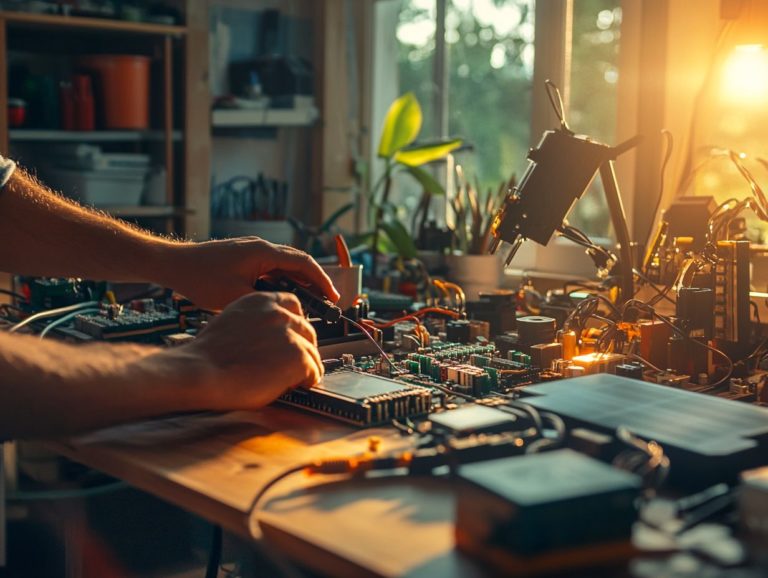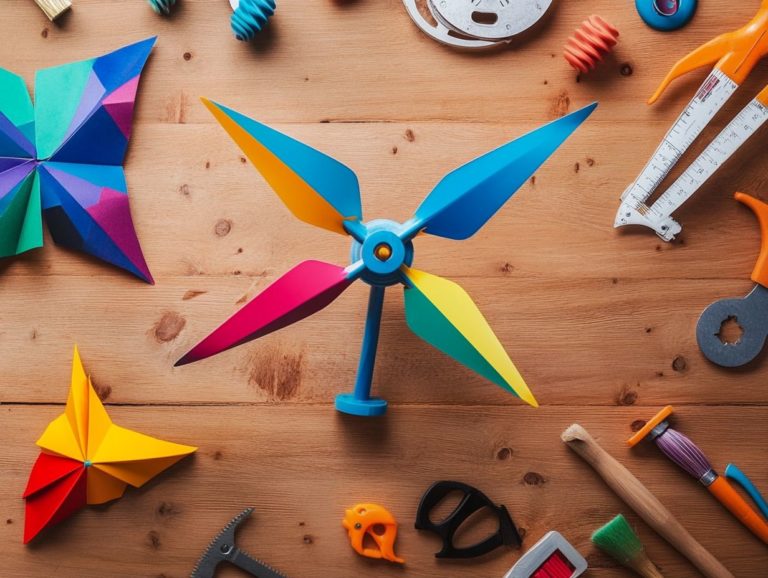How to Make a Homemade Heat Pump
If you’re in search of an energy-efficient heating and cooling solution, crafting a homemade heat pump could be the ideal answer for you. This DIY project allows you to customize your heating system while focusing on home improvement.
This guide delves into the fundamentals of a heat pump and its operation, showcasing the numerous benefits of creating your own from significant cost savings to a smaller environmental footprint. Integrating solar panels can further optimize energy efficiency.
You ll find a comprehensive list of essential materials and tools, along with detailed, step-by-step instructions for assembly. Plus, there are maintenance tips to ensure your heat pump continues to operate smoothly.
Prepare yourself to embark on a fulfilling DIY project that elevates both your home’s comfort and sustainability. From renewable energy solutions to advanced heating systems, this project covers it all!
Contents
- Key Takeaways:
- Benefits of Making a Homemade Heat Pump
- Materials and Tools Needed
- Step-by-Step Guide to Building a Homemade Heat Pump
- Maintenance and Troubleshooting
- Frequently Asked Questions
- What materials do I need to make a homemade heat pump?
- Is it difficult to make a homemade heat pump?
- Can I use any type of refrigerant for my homemade heat pump?
- Do I need to have any special tools to make a homemade heat pump?
- How much will it cost to make a homemade heat pump?
- Are there any safety precautions I should take when making a homemade heat pump?
Key Takeaways:
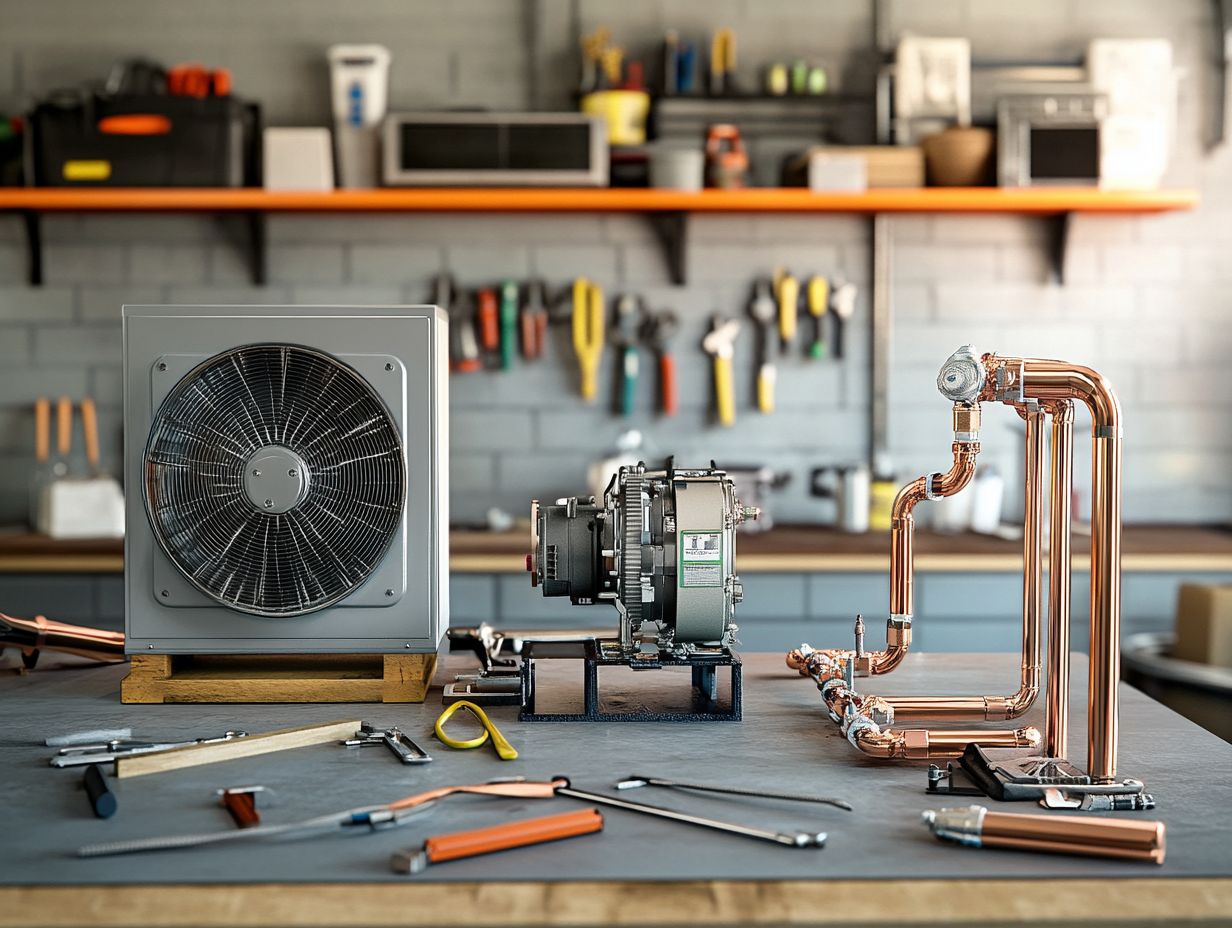
- Homemade heat pumps can save money and reduce environmental impact through their use of natural energy sources. Integrating solar panels and other renewable energy options can further enhance these benefits.
- The essential components for a homemade heat pump can be easily obtained and assembled with basic tools and materials.
- Proper maintenance and troubleshooting can ensure the smooth operation of a homemade heat pump, prolonging its lifespan and effectiveness. Employing tools like an energy monitor can help track power consumption and efficiency.
Ready to transform your energy setup? To understand the technology behind it, let’s explore how a heat pump works while diving into building your homemade heat pump!
What is a Heat Pump and How Does it Work?
A heat pump is an innovative device that harnesses electricity to transfer heat from one place to another, offering you efficient heating and cooling for your home, business, or even a greenhouse. It works by extracting heat from the outside air, ground, or water, even in chilly conditions, and transferring that warmth indoors to create a comfortable space. This technology isn t just energy efficient; it s also environmentally friendly, significantly reducing your energy consumption compared to traditional heating systems like gas or electric furnaces.
A heat pump uses a process similar to how air conditioners work, but with the added bonus of being able to reverse its operation. During warmer months, it can pull heat from inside your building and release it outside, effectively cooling your indoor environment. For those interested in enhancing energy efficiency, learning how to construct a DIY solar air heater can be a valuable project.
There are various types of heat pumps available, including air-source and geothermal models, each offering its own unique advantages. You might also consider underfloor heating systems for enhanced comfort. Air-source heat pumps are typically easier to install and maintain, while geothermal heat pumps, which tap into stable underground temperatures, often provide superior energy efficiency.
By choosing a heat pump, you can lower your utility bills, produce fewer greenhouse gas emissions, and contribute to a more sustainable planet. The incorporation of solar panels can further reduce your electric bill and enhance your overall energy efficiency.
Benefits of Making a Homemade Heat Pump
Creating your own homemade heat pump brings an array of benefits that can transform your energy experience. Imagine substantial savings on your electric bills, enhanced energy independence, and a reduced carbon footprint. Integrating renewable energy sources like solar panels and EarthBattery systems can significantly enhance these benefits.
By harnessing renewable energy, your DIY heat pump can significantly lessen your reliance on fossil fuels, allowing you to customize your heating solutions to perfectly fit your unique needs. This endeavor not only promotes sustainability but also cultivates a sense of accomplishment and innovation as you dive into creating homemade solar heating panels, making it a rewarding DIY project.
Cost Savings and Environmental Impact
The cost savings associated with building your own heat pump can be substantial. You can cut down on your electric bills while making a positive impact on the environment. By embracing energy-efficient technologies like a heat pump, you can significantly reduce your energy consumption and greenhouse gas emissions, ultimately minimizing your environmental footprint.
The initial investment in materials and tools might seem high. However, you’ll often recoup these costs over time through savings on energy bills and potential government rebates for utilizing renewable energy technologies.
Although the upfront costs of DIY heat pumps may seem intimidating, they often pale in comparison to the long-term savings on your heating and cooling expenses. These systems typically operate more efficiently than traditional heating methods, leading to a return on investment that can save you hundreds of dollars each year. This creates a compelling financial incentive to pursue energy-efficient upgrades.
By harnessing renewable resources and reducing your reliance on fossil fuels, you’re not only enhancing your financial well-being but also contributing to broader environmental sustainability goals. As communities increasingly embrace greener options, every home that adopts such systems plays a pivotal role in fostering a more sustainable future.
Materials and Tools Needed
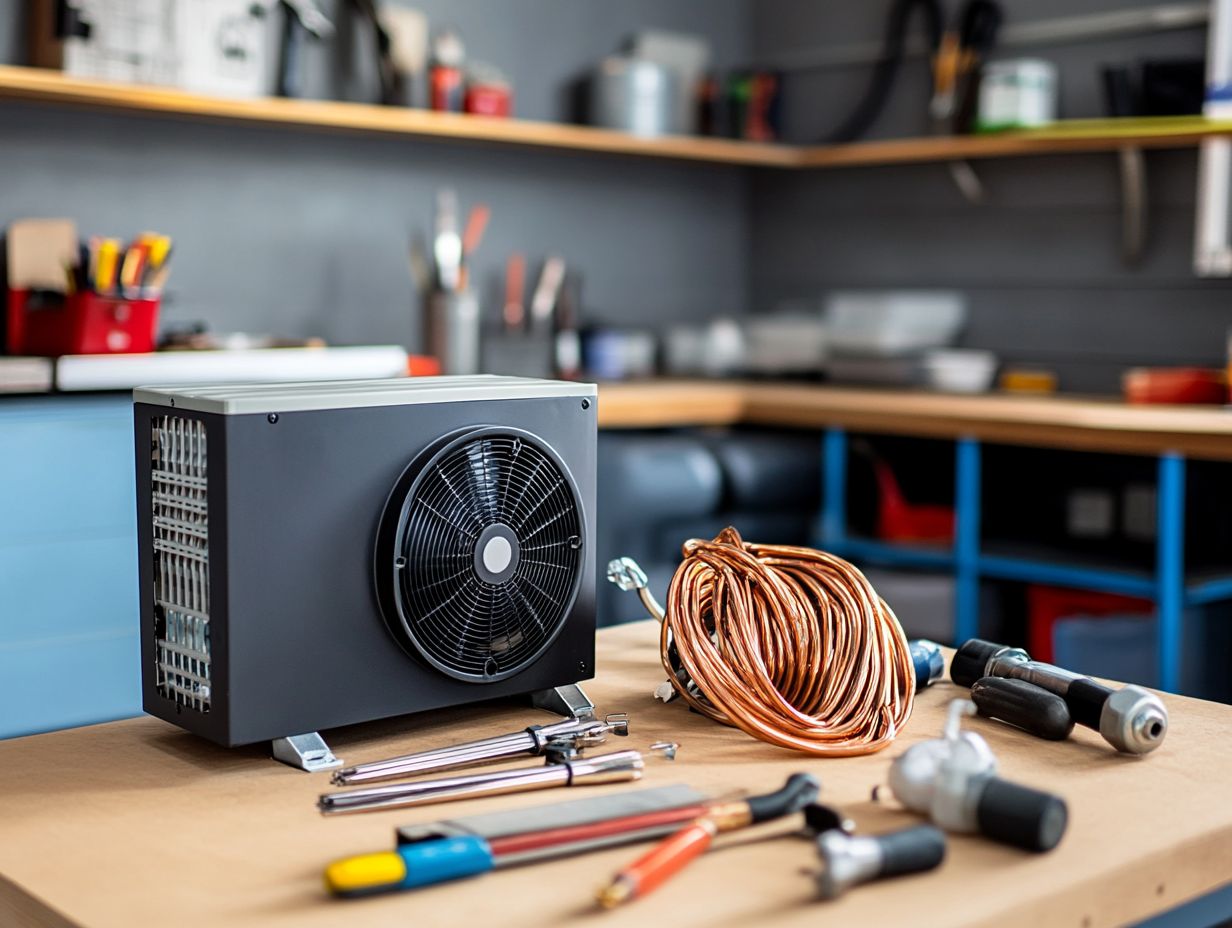
When you embark on a DIY project to build a heat pump, gathering the right materials and tools becomes crucial for ensuring a successful installation and best performance.
The essential components you’ll need include a reliable compressor, such as the Danfoss BD350GH/Twin, along with a Grundfoss Alpha circulator pump. You’ll also require HDPE pipes for fluid transport and sufficient insulation materials to minimize energy loss.
Don t overlook the importance of electrical wiring and tools, like thermal imaging cameras. These tools will enable you to achieve precise installation and effectively monitor the performance of your heating system.
Key Parts You Need for Your Heat Pump
To successfully construct your homemade heat pump, you’ll need to integrate several essential components, each playing a crucial role in the system s overall functionality. Start with a compressor to circulate the refrigerant, a heat exchanger to facilitate heat transfer, and an air handler to distribute warmed air throughout your home.
Consider using the Danfoss BD350GH/Twin compressor and the Grundfoss Alpha circulator pump. These effective components can significantly enhance your system s efficiency. Also, using HDPE pipes for fluid transport can further optimize your setup.
Don t overlook the importance of a thermal expansion valve; this device regulates the flow of refrigerant into the evaporator, ensuring optimal pressure and temperature for effective heat absorption. A high-quality air handler is also crucial for maintaining indoor comfort.
The evaporator will absorb heat from the outside air, while the condenser releases heat into your home. The refrigerant is a fluid that absorbs and releases heat, making heating and cooling possible. By understanding how these components interact, you can construct a more efficient and reliable homemade heat pump, providing you with sustainable heating solutions while minimizing energy consumption. For those interested in DIY projects, you might also explore how to create a homemade thermoelectric generator.
Step-by-Step Guide to Building a Homemade Heat Pump
Building a homemade heat pump requires a meticulous approach to ensure that each component is installed correctly and operates efficiently, achieving optimal energy performance. Employing thermal imaging cameras can help ensure that your installation is both precise and effective.
Start by gathering all the essential materials and tools, including the compressor, heat exchanger, and insulation.
Next, carefully plan the layout and design of your system. Pay close attention to the electrical wiring and connections to ensure safety and functionality throughout the installation. This thoughtful process will culminate in a high-performing heating system specifically tailored to meet your home’s unique needs.
Instructions and Tips for Assembly
As you embark on the journey of assembling your homemade heat pump, following clear instructions and integrating expert tips will streamline the process and ensure a successful installation. Start by effectively insulating the system to minimize heat loss. Pay careful attention to the electrical wiring to avoid safety hazards.
Using the right tools and techniques will facilitate smooth assembly and enhance the efficiency and reliability of your DIY project.
Before diving in, gather all necessary materials and confirm that you fully understand the assembly guidelines. Ensure the insulation is appropriately rated for your environment, and consider using high-quality insulation tape to secure the seams.
When dealing with the electrical components, double-check each connection to ensure compliance with local electrical codes. Make sure that all electrical wiring is securely installed to avoid potential issues. It s crucial to attend to grounding requirements, as these are vital for your safety.
Once you ve assembled the system, test it in a controlled environment to verify that everything functions as intended. This allows you to make any necessary adjustments before launching your creation for full-scale operation.
Maintenance and Troubleshooting
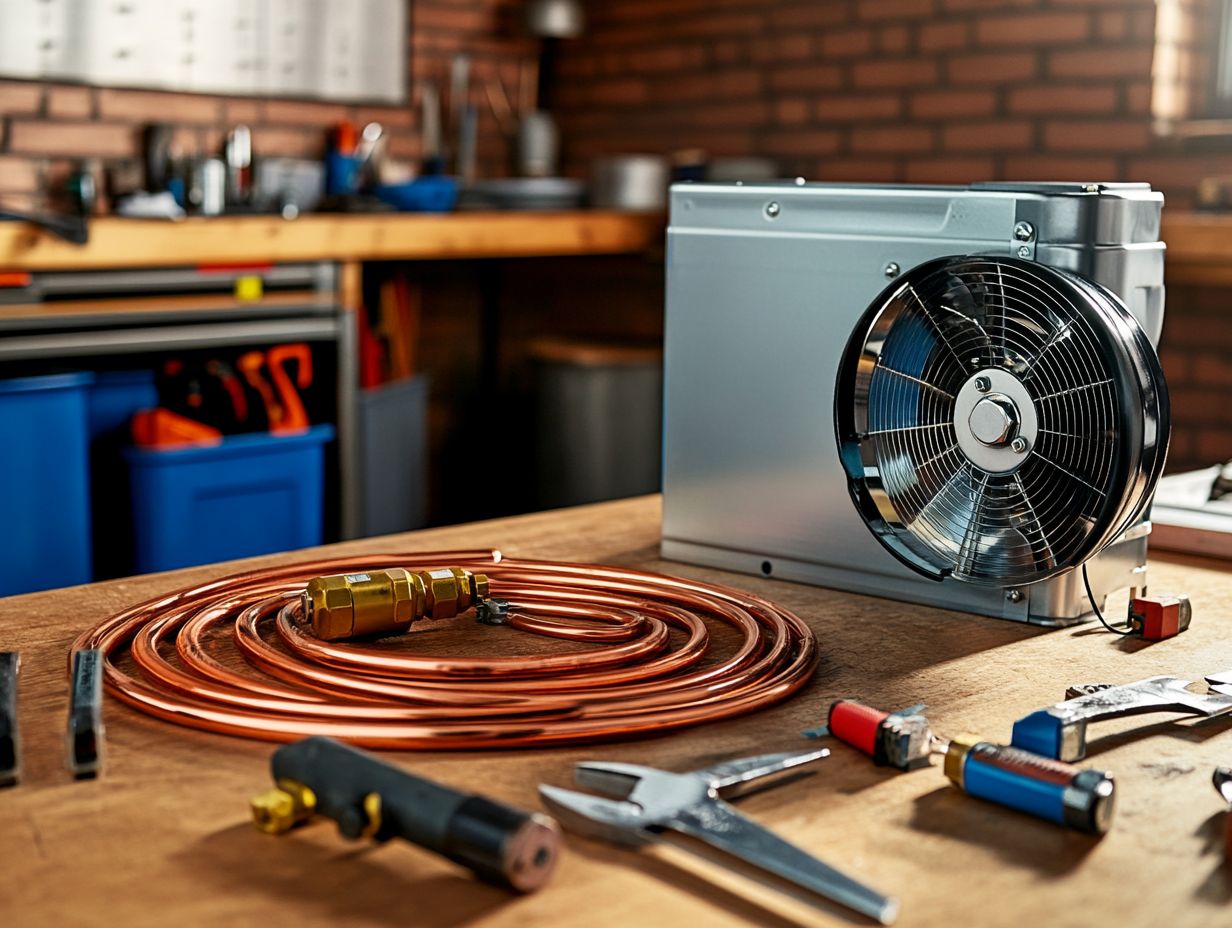
Regular maintenance and troubleshooting are vital for ensuring your homemade heat pump operates smoothly and efficiently. This includes checking the thermal siphon and ensuring the proper function of components like the ventilation systems.
By routinely inspecting for issues like inadequate insulation or irregular electrical supply, you can proactively prevent potential problems that might compromise performance.
Utilizing an energy monitor can also be advantageous, as it allows you to track the system’s efficiency and electricity consumption. Monitoring tools like BTU meters can provide insights into the heat output of your system, ensuring your DIY project remains effective and cost-efficient.
Tips for Keeping Your Homemade Heat Pump Running Smoothly
Regularly check your heat exchanger and compressor to ensure they function at optimal efficiency. Proper insulation and ductwork can also contribute to the overall performance of your system.
To ensure your homemade heat pump operates at peak performance, it is crucial to implement ongoing maintenance tips and remain vigilant about potential issues. Regularly updating your energy monitor, cleaning the outdoor unit, and checking refrigerant levels are essential steps. Additionally, if you’re interested in sustainable solutions, you might consider learning how to build your own solar water heater to enhance the efficiency and longevity of your heating system.
Promptly addressing any signs of wear or malfunction will help maintain the integrity of your DIY project. Monitoring power consumption and ensuring proper insulation can further improve energy efficiency.
Inspecting and replacing air filters regularly is essential, as clogged filters can severely hinder airflow and efficiency. Verify that all electrical connections are secure and free from corrosion; loose or damaged wires can reduce performance. Also, ensure the air handler and ductwork are in good condition for optimal efficiency.
When troubleshooting, be aware of common issues such as strange noises or temperature inconsistencies, which may indicate a need for further inspection or professional assistance. Using thermal imaging can help identify problem areas.
By keeping detailed records of your maintenance activities and any irregularities, you can easily monitor the overall health of your heat pump. This meticulous approach is especially important when dealing with larger installations, like domestic heating or greenhouse systems. Additionally, if you’re interested in sustainable solutions, you might explore how to make your own solar water pump to enhance your energy efficiency.
Frequently Asked Questions
What materials do I need to make a homemade heat pump?
To make a homemade heat pump, you ll need a compressor, coils, fan, refrigerant, tubing, and insulation. Consider adding solar panels for eco-friendliness.
Is it difficult to make a homemade heat pump?
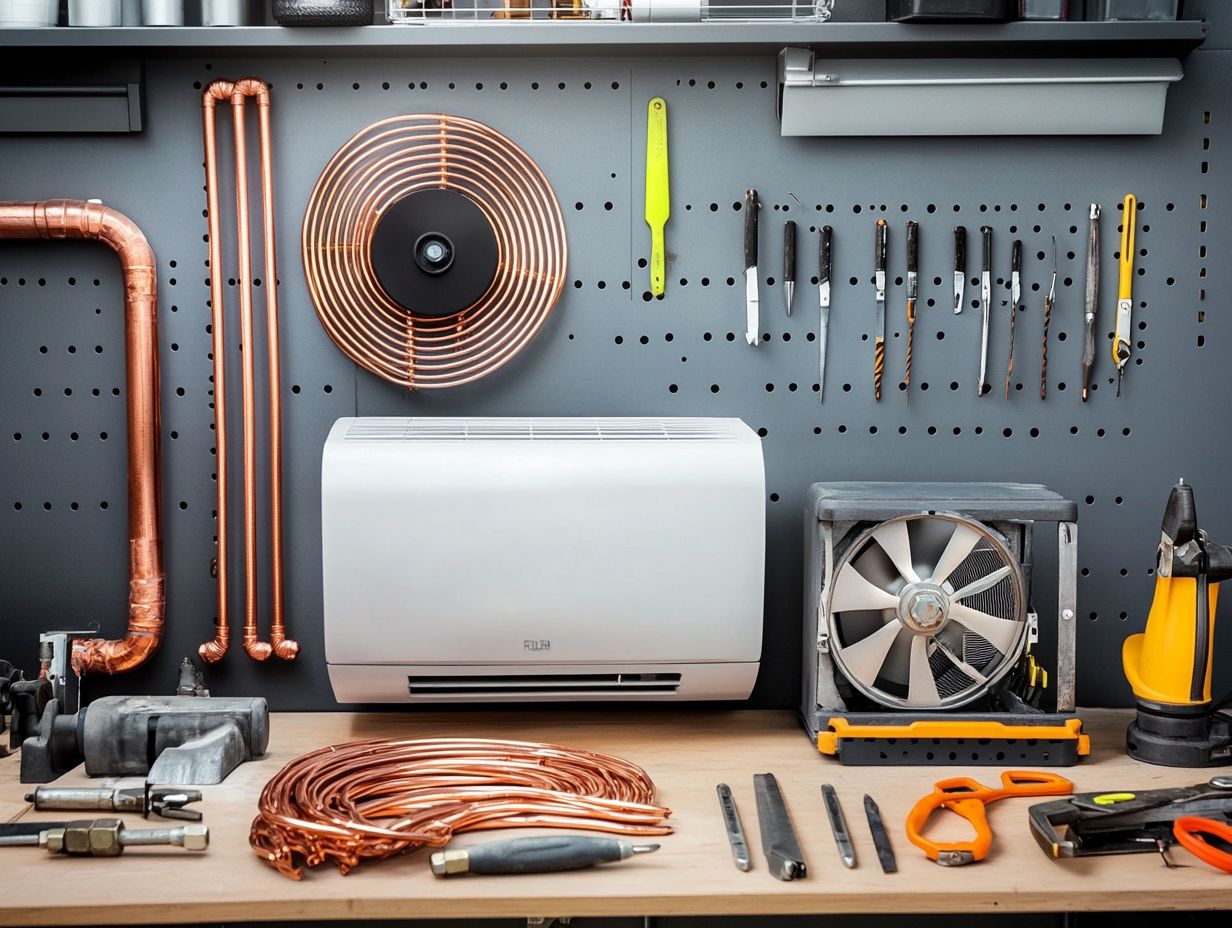
Making a homemade heat pump is a fun challenge! With the right materials and clear instructions, any skilled DIY enthusiast can tackle this exciting project. You can even enhance your heat distribution by adding features like underfloor heating.
Can I use any type of refrigerant for my homemade heat pump?
No, it s crucial to use the right type of refrigerant for your project. Refrigerants are substances that absorb and release heat to help regulate temperature. Commonly used options include R-410A and R-22, but be sure to research which one suits your needs best. You might also look into specialized refrigerants like Danfoss BD350GH/Twin for specific applications.
Do I need to have any special tools to make a homemade heat pump?
While basic tools like a drill and wrenches are helpful, you may also need to rent or buy a vacuum pump a tool that helps get rid of air in the refrigerant system and a gauge set that helps charge the refrigerant. Additionally, thermal imaging tools can be great for spotting heat leaks, ensuring your home stays efficient.
How much will it cost to make a homemade heat pump?
The cost of building your homemade heat pump can vary based on the materials and tools you already have. On average, you might spend between $500 and $1000. Using renewable energy sources and efficient components like Fronius Symo and Grundfoss Alpha can help reduce costs in the long run and boost your investment.
Are there any safety precautions I should take when making a homemade heat pump?
Yes, following safety precautions is essential! Always wear protective gear and ensure you work in a well-ventilated area. It’s also wise to have a professional review and approve your final product before using it. Ensuring proper ventilation and electrical supply is critical for safe operation.

